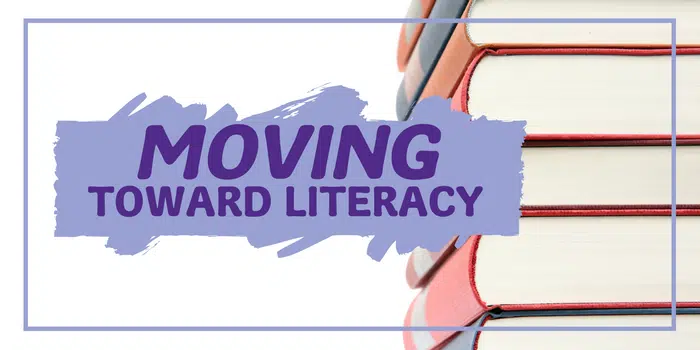The human brain is hardwired to communicate through language. Infants are born being able to orient their gaze toward faces, and turn their heads to look for the familiar voices they might have heard while in the womb as a reflective instinct. Babies don’t need to be taught how to talk, they are absorbing the subtleties of their home language even before birth, and learn to speak by experimenting with sound and through their daily interaction with their caregivers. But, transferring that knowledge of language into literacy is a bit more complicated. While we are born with the ability to learn spoken language, learning to read and write takes a little more work. It takes coordination between the two hemispheres of the brain, a certain level of physical development, and an understanding that the abstract symbols of a written language have meaning to the concrete world around us. And on top of all of that, kindergarten literacy levels have been shown to predict reading levels and academic success all the way into tenth grade, it’s no wonder parents (and teachers) feel a tremendous amount of pressure to make sure their toddlers and preschoolers are on the right track.
This pressure often leads parents to take the elements of written language out of context for their children and into the form of flash cards, drilling, and route memorization. And while these activities are well meaning, and there is some level of direct instruction involved in the process of learning to read, there is nothing that has a greater impact on a child’s learning process than authentic, real world experiences that are developmentally appropriate for both their growing brains and bodies.
But, what do these authentic experiences look like?
Here are some simple steps you can take with your child to Move Toward Literacy:
- Make sure your child sees YOU as a reader: Lead by example. Children need to see their caregivers and role models interacting with text on a daily basis, and not just on their phones and computers. They need to see you reading actual books both for pleasure and to find answers to daily questions.
- Point out the useful text you see. Street signs, grocery lists, and mail are all ways in which we need to read in order to get through our day to day life.
- Move! Give your child many opportunities to move their bodies in lots of different ways. Focus on reaching across the body to build the connection between the two hemispheres of the brain.
- Read WITH your child, not just TO your child. When you read books with your child, interact with the text- ask questions, point out details in the illustrations, even act out the story as you go along. Help them to become active participants in their own learning.
If you want to learn more about how to help your child Move Toward Literacy, please join me for a Parent Workshop at Bubbles Academy on March 20th at 5:30.
Also, check out one of my favorite books on how children learn best, Einstein Never Used Flash Cards.

Samantha Perry
Samantha Perry is the Director of Bubbles Academy’s Arts-Integrated Preschool Program. She is also the recipient of the Harris Foundation’s Scholarship for Excellence in Leadership and is currently pursuing a Master of Science in Child Development with a specialization in Administration at Erikson Institute. The Harris Excellence Scholarships are awarded annually to a select number of students with excellent academic credentials and a demonstrated commitment to the field of early childhood.
Sam is grateful for the opportunity to use both her theatrical expertise, and broad knowledge of needs of young children at Bubbles Academy’s arts-integrated preschool program. As an educator, Sam strives to inspire confidence, independence, curiosity and creativity in each of her students every day.
